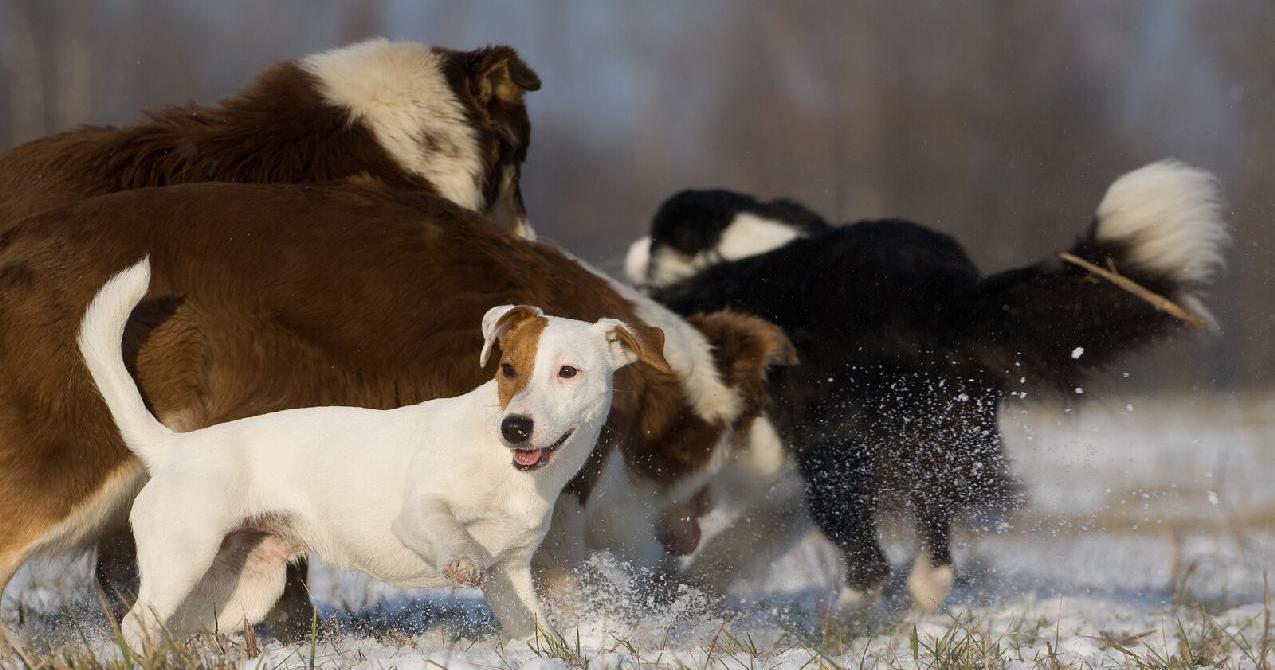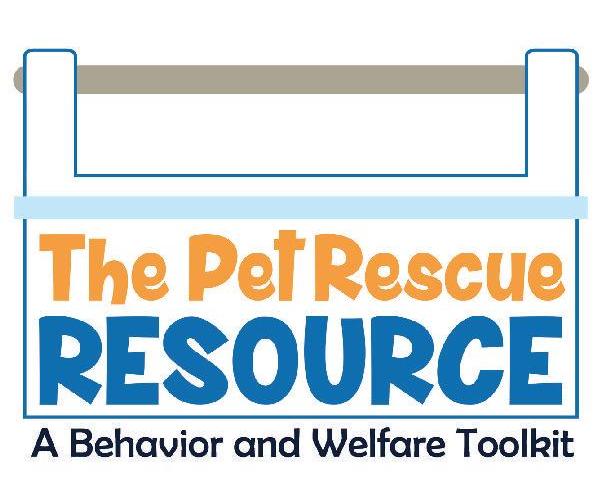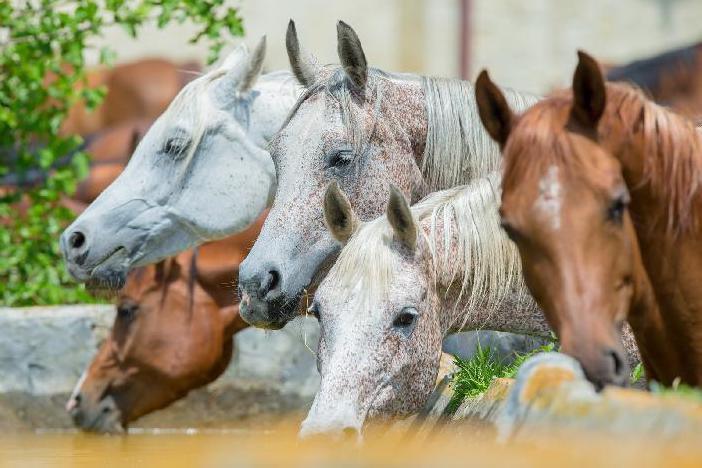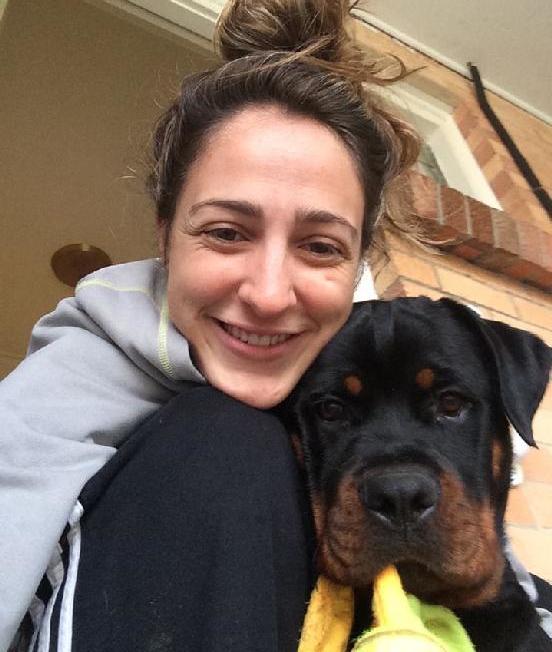
22 minute read
Live sessions, Project Trade, webinars, podcasts, and more
Playgroups for Shelter Dogs

Advertisement
K. Holden Svirsky introduces and breaks down the latest resource from the Pet Rescue Resource, Dog Playgroups, and explains why playgroups are beneficial to resident shelter dogs, as well as outlining best practices on how to set them up to ensure the maximum benefits for the dogs and safety for all parties involved

© Can Stock Photo / raywoo The Pet Rescue Resource Dog Playgroups toolkit highlights the importance of each dog’s comfort level and play style and also includes a range of video content to help shelter staff and volunteers better understand and decode canine body language
Recently, great strides have been made in bringing forcefree train cluded in the Help for Jumpy/Mouthy Foster Dogs resource are short aring to the world of sheltering and rescue. And in 2017, PPG estab ticles, stepbystep training plans, easytouse and printable checklists, lished the Shelter and Rescue Division, of which I am a proud and short video clips. working member. In May 2019, we released the results of a survey we The Pet Rescue Resource adheres to PPG’s mission of providing the conducted amongst members who were/are affiliated with the shelter greatest value and highest quality, stateoftheart, forcefree, scienceand rescue community and one of the most prominent suggestions we based training and care for companion animals, specifically “to educate received was the significant need for standardized, easytouse and ac and engage industry professionals on the efficacy of positive reinforcecessible protocols. ment based training and behavior modification programs.” (Pet ProfesHigh Stakes sional Guild, 2019). As such, the Shelter and Rescue Division strongly disagrees with the frequently heard defense that aversive measures are The stakes are high in shelter/rescue work. Without a home or familiar necessary to avoid euthanasia. guardian to advocate for them, these are vulnerable populations of ani This “aversives or death” argument is particularly prevalent when mals, some traumatized, and often with attendant and challenging be discussing dog behavior in shelter dog playgroups, and we are aware of havior issues. Many of these animals are given a limited amount of time the existence of at least one program wherein the proactive use of averto become “adoptable.” sives is considered necessary to prevent conflict behaviors in play
Last year, the Shelter and Rescue Division created The Pet Rescue groups. However, we do not believe aversive training methods are Resource, a forcefree behavior resource for shelters and rescues. This necessary to save lives. This is exactly why we developed The Pet Resaccessible and free site provides a detailed level of information and sup cue Resource, a toolbox of best practices in behavior modification and port. So, if a foster family is struggling with a jumpy/mouthy dog, they management for the most common behavior problems seen in compancan be pointed to behavior modification instructions and video. In ion animals who are in shelters or foster homes.
Limited Resources
According to our 2019 survey, enrichment programs in shelters were those most often rated as satisfactory. It is excellent news that enrichment is already being implemented and prioritized in shelters and rescues. For this reason, we have not focused our work where there is less need. Instead, the most dissatisfaction from survey respondents pointed to the difficulty of providing successful behavior modification and dog playgroups, and so this is what we prioritized. “In addition to support with behavior modification, shelters are interested in different dog playgroup models than what’s currently available,” confirmed Dr. Kelly Lee, PPG Shelter and Rescue Division chair. As a result, this year, we added the Dog Playgroups resource to The Pet Rescue Resource. (For a com‐plete program overview, see also Playgroups: The Protocol at a Glance.)
Having worked and volunteered at many different shelter and rescue organizations across the United States, the authors and creators of The Pet Rescue Resource understand that shelters and rescue groups often have very limited resources. As trainers, we might consider that behavior modification and dog playgroups require a number of staff members with certification(s) in the field. Yet our survey shows that shelters are also unsatisfied with the number of staff and volunteers certified in behavior modification and training. It takes a great deal of time and effort to train staff, volunteers and foster families. And not all shelters can afford to hire certified behavior professionals.
Allocation of limited resources is a primary conundrum of shelters and rescues. While an existing playgroup protocol advertises an ability to run groups with few staff or volunteers, it also relies on aversive measures to manage dog interactions. Another existing protocol does not rely on aversives, but recommends both a high ratio of handler to dog and a significant amount of handler expertise (formal training in animal behavior). Either option may appear daunting, complicated, expensive and/or risky.
Faced with these two options (use of aversives or the need for a great number of highly trained behavior staff), plenty of shelters give up on playgroups altogether. And with this conservation of resources, many dogs may suffer in isolation: “In assessing the psychosocial wellbeing of dogs, social isolation may be as harmful or more harmful than spatial restriction.” (Hetts et al., 1992).
While it seems to be readily accepted that play is “good” for dogs, many shelters give up on attempting to hold playgroups because “it’s too risky” or they simply don’t feel they have the time or staff required. It’s our opinion that you can actually save time and resources by running playgroups, and can do so even if you don’t have the resources to hire specialized staff.
Social Opportunities
In light of this year’s unprecedented coronavirus pandemic and the social isolation of people, we’ve noticed an uptick in interest in companion animals’ social opportunities. Suddenly, people who may not have previously even considered it have developed empathy for dogs housed in isolation. Any shelter or rescue staff member or volunteer has sadly borne witness to behavioral decline in singlyhoused dogs if they’ve worked in the field long enough. It can be a helpless feeling.
With The Pet Rescue Resource, staff and volunteers can get to work right away. It is a simple, organized and totally freetouse resource and website that’s easy to interact with and includes graphics and videos that make the written plans come to life. Playgroups can feel overwhelming, but The Pet Rescue Resource breaks everything down into manageable pieces. It is designed for implementation by handlers with or without behavior modification experience, and with the greatest possible efficiency to minimize additional work for busy staff and volunteers in underresourced organizations.
Facilitating playgroups that look similar to a visit to the average dog park is important for a number of reasons. Adopters want to know if
Key Resources
s Barrier Frustration Introduction s Dog-Dog Introductions s Dog Playgroups s Medical and Behavioral Considerations s Muzzle Training s Playgroup Gear Checklist s Playgroup Glossary s Playgroups: The Protocol at a Glance s Resources Index s Selecting Dogs s Why Playgroups? s Help for Jumpy/Mouthy Foster Dogs
they can bring their dog to the dog park and what kind of play, if any, they can expect to see. While highly trained and specialized behavior staff may be able to set up ideal dogdog introductions, shelters may not have many staff members with this skill set. Nor are adopters always equipped with the knowledge or skill to carefully introduce dogs in an ideal setting. Some slow, careful dog introduction methods can take hours, at a minimum. Time is not on the side of shelter/rescue dogs or their caregivers.
The Dog Playgroups resource is comprehensive, explaining not just the “why,” but “how” playgroups can be so beneficial to facilityhoused dogs. And we have used these protocols ourselves, running playgroups as part of the daytoday routine care of dogs. During playgroups, multiple kennels can be cleaned and multiple dogs can be exercised at the same time, which can be a crucial time and resource saver for underfunded organizations.
The Pet Rescue Resource takes into account the importance of each dog’s comfort level and play style. We decode dog body language with embedded videos, and include a glossary for the terms used and avoid jargon whenever possible. A master’s degree is not required to understand the product or protocol. Playgroups should be friendly and accessible for all.
The Pet Rescue Resource is also transparent and upfront about the use of aversives: “Aversives should only be used when necessary to break up a fight already in progress. Aversives are not used to teach social skills or improve play. Instead, we show you how to manage or intervene in play using methods that do not cause fear or pain.” (Pet Rescue Resource, 2020).
Site WalkThrough
Let’s now take a detailed walkthrough of the resource. First, Why Playgroups? Many people realize that playgroups are a great outlet for shelter dogs but sometimes it feels difficult to justify running them for various reasons. Materials in this section are provided to help serve as the starting point for discussions with all stakeholders.
Running regular playgroups provides many benefits for dogs and people:
The stakes are high in shelter/rescue work. Without a home or familiar guardian to advocate for them, these are vulnerable populations of animals, some traumatized, and often with attendant and challenging behavior issues. Many of these animals are given a limited amount of time to become “adoptable.”
• Do more with limited staff. Reduce the number of staff required per outing and increase the number of dogs who can be out at one time. Reduce time spent on managing or modifying behavior problems stemming from insufficient enrichment, exercise, and access to other dogs. • Get to know your dogs better. Playgroups give valuable information about adoptable dogs, like how they might fare at a dog park or how safe they are if they do get into a scuffle. • Decrease length of stay and returns. Playgroups can help shelter dogs get adopted more quickly and help adoptions “stick.” • Improve your shelter’s public image. People love to see dogs happy and playing. • Advertising your playgroup program. This can improve public perception of your shelter or rescue and the quality of life you provide for the dogs in your care and attract volunteer and donor interest in your programs.
The Dog Playgroups resource also acknowledges the possible risks of holding playgroups. These may include an increased risk of injuries to dogs, injuries to staff and volunteers, negative outcomes for some dogs as a result of playgroup incidents, associated upset and conflict amongst volunteers and staff, and disease spread.
Importantly, we thoroughly explain stepbystep protocols for reducing conflict and/or breaking up fights in order to minimize the risk of injuries. We also point out the risks inherent in forgoing playgroups. These include unknowingly adopting dogs to the general public who are unsafe with other dogs, behavioral decline (including escalating barrier frustration) associated with lack of access to other dogs and the freedom to express normal social behavior, behavioral and physical decline associated with “kennel stress” and insufficient physical exercise and mental stimulation.
ReadyToGo Toolkit
The Dog Playgroups resource gives you the tools you need to hit the ground running with easytoread summaries of exactly what is needed to get started in the Resources Index. If you have an enclosed space, two or more dogs and two to three staff or volunteers, you can run playgroups! A video on the website gives a virtual tour of a number of playgroup spaces, and then a checklist that enables different shelters to choose options based on what they have easily available to them.
Key components include: ● A welldesigned enclosed play space. ● Playgroup gear and safety equipment. ● Staffing for playgroups. ● Protocols and policies encompassing all aspects of running playgroups.
When setting up the play space, we encourage shelters and rescues to consider size, substrates, pathways to areas, access to gear and water, gate types and play equipment for your playgroups. Some groups will already have many of these needs on hand. Other items will need funding or a donor base to acquire them, depending on priority.
Size of Space
One source suggests a minimum of 50100 square feet per dog (Bennett & Briggs, 2008). There are pros and cons to both large and small spaces.


© Can Stock Photo / daliborsosna The Pet Rescue Resource’s Dog Playgroups toolkit includes detailed protocols for safely introducing dogs to ensure maximum benefit for all parties
Very large play spaces can make it difficult to reach dogs quickly should a fight occur, or if a dog needs to be interrupted during a tense exchange. A larger space might require more staffing in order to reach any part of the play yard quickly in the event of a fight. Conversely, very small spaces make it difficult for dogs to move away from each other to diffuse potential conflict. If you only have access to a small enclosure, consider using it for pairs of dogs if they are large, and three or more dogs if they are small.
Substrate/Ground Covering
Know the pros and cons of the ground covering in your play area. For example, pea gravel can be difficult for staff to move quickly on, especially when it is wet. Concrete or linoleum for indoor spaces (yes you can run playgroups indoors!) can cause injuries due to dogs slipping. Yoga mats can be used to break up slippery surfaces indoors. Cement can get hot and friction can cause paw pad irritation. The best option is a natural grassy or earth playground.
Access to a Fight Kit
A fight kit should be easily accessible from any part of the play space. Consider both size of space and ground cover type when deciding where to place fight kits, and how many to have available. If the play space is very large, consider placing multiple fight kits in the space.
Details about setting up a play space and how to prepare for the possibility of a fight are all provided as part of the Playgroup Gear Checklist. One of the site authors, Dr. Maria Karunungan said the following regarding the flexibility and range of the protocols based on the level of risk acceptable to that particular shelter: “We decided to make the site like chooseyourownadventure because it opens up the possibilities to a wider variety of shelters and rescues and allows those people to describe what level of comfort they’re at. Are they okay with a couple scraps? Do they never want to see any aggressive behavior? This allows them to make informed decisions.” Indeed, there is a wide range of what’s “good, better and best” plus two fight protocols provided. There is room for veterinary staff to make medicallyinformed recommendations.
Staffing the Playgroups
Playgroups generally require two to three people at minimum for 20 to 60 minutes depending on the number of dogs who will be interacting together, their energy level, and how wellknown the dogs’ play styles are. More handlers may be needed to spread out over a larger play space, to be able to reach dogs within a few seconds. A handler’s ability to move quickly over a large area on different surfaces should also be considered. Playgroups can be staffed by shelter or rescue staff, or by volunteers. We have provided a “good, better, best” categorization for number of handlers to help you decide which option is best for you, based on your shelter’s resources, priorities, and comfort with risk: ● Good: two handlers. ● Better: three handlers. ● Best: three handlers plus one additional handler per unknown dog.
We recommend that a handler should never be left alone in a yard in case of a fight or other emergency.
Staff Roles
Roles for personnel are as follows: Lead, Assistant(s), and Runner(s). Some responsibilities may be shared or may overlap. The Lead is the primary decisionmaker. Good communication and a clear plan should be in place so that all personnel know what they are doing.
The Lead selects which dogs are to be included in the playgroup
Even professionals cannot typically eyeball whether aggressive behavior seen when dogs meet through a fence or when on leashes is “true” aggression or simply frustration. They look the same. Unfortunately, this results in many dogs being labeled “dog aggressive” and missing out on playgroups at a shelter, or being adopted to “only dog” homes where they live lives entirely away from members of their own species, or even euthanasia.

© Can Stock Photo / lightpoet Barrier frustration is common in shelters where dogs have limited access to other dogs, however, barrierfrustrated dogs often play well with other dogs offleash
based on dog profiles and previous playgroup history. To help with this, the Dog Playgroups resource provides easy, printable forms for playgroup matchmaking (see Selecting Dogs and ‘Making Playgroup Matches’ on p. 14) as well as videos on the various options for dog introductions (see Dog‐Dog Introductions).
A shelter’s veterinary staff should set specific guidelines for dogs who have had surgery recently, are unvaccinated, contagious, wounded, or have other conditions that might make play painful or problematic (skin conditions, arthritis, orthopedic injuries, heartworm, etc.).
The size of dogs should also be considered. Dogs should be roughly sizematched. A helpful rule of thumb is that no dog in a playgroup should be more than twice the weight of any other dog in that group.
Behavior History
The Lead should also review behavior history from previous guardians, reporting parties who found a stray dog, and shelter staff. Examples of behavior history that should exclude a dog from playgroups include: ● Killing another dog of similar size. ● Seriously injuring another dog (e.g. multiple deep punctures or lacerations requiring sutures). However, if such dogs love playing with other dogs and your shelter places them, have them play with a wellfitted and preconditioned muzzle. ● A pattern of fighting with other dogs as the only type of interaction when given dog access. ● Predatory body language or behavior directed at other dogs (stalking that is not in play).
The resource includes a video example of stalking behavior (see Medical and Behavioral Considerations). If staff is unsure whether stalking behavior is playful, muzzle train the dog to allow further investigation (see Muzzle Training).
Sometimes a dog has a behavior history that could cause some shelters or rescues to be reluctant to include that dog in playgroups. These behaviors are not always evidence that a dog cannot play well with other dogs offleash, so for example, the following behavior history should not exclude dogs from playgroups: ● Barrier frustration (barking/lunging/growling on leash or from behind a fence or kennel door). ● Noninjurious scuffles with other dogs. ● Minor injuries to other dogs not requiring medical
It’s hard to underestimate the potential for lives saved by knowing how to introduce barrierfrustrated dogs. Again, these are dogs who love to play and are often completely misunderstood. In isolation, they decline rapidly and more severe behavior problems may develop. Over and over these dogs watch other dogs walk by their kennels and continue to experience frustration, day in and day out, with no relief.
intervention (shallow scratches or punctures that don’t require shaving, suturing and/or antibiotics). Other behaviors might warrant discussion and/or additional precautions, such as excluding the dog from playgroups or requiring (preconditioned) muzzles if such dogs love playing with other dogs, including: ● “Latch ons” (dogs who hold on for an extended period when they bite). ● Killing or seriously injuring a much smaller dog. ● Fear and avoidance of other dogs. ● History of biting handlers who attempt to intervene in play.
The playgroup Lead will assign tasks to Assistants and Runners like watching a particular dog closely, minding leashes that are dragging, bringing a new dog in, etc. They will direct assistants’ and runners’ responses to tension between dogs, injuries or fights and keep dogs away from the entrance to prevent dogs from clustering around a new arrival. The Lead will monitor new dogs added to the playgroup, narrate body language and model interventions. Finally, the Lead will record data and share with the organization’s relevant staff.
Barrier Frustration
Barrier frustration is a doubleedged sword that is also a common phenomenon. While many dogs can be safely introduced through a fence and assessed this way to see if they are interested in play, for a great many other dogs a throughthefence introduction can result in a false positive for aggression. We define barrier frustration as barking, lunging, growling and/or snarling due to the frustration of being on a leash or behind a barrier like a gate, fence or window. The barrier prevents the dog from accessing other dogs for normal social rituals, resulting in emotions of frustration that wouldn’t be present if the barrier were not present. Barrierfrustrated dogs often play well with other dogs offleash. This behavior occurs frequently in many shelters where dogs have limited physical access to other dogs.
Even professionals cannot typically eyeball whether aggressive behavior seen when dogs meet through a fence or when on leashes is “true” aggression or simply frustration. They look the same. Unfortunately, this results in many dogs being labeled “dog aggressive” and missing out on playgroups at a shelter, or being adopted to “only dog” homes where they live lives entirely away from members of their own species, or even euthanasia. We find this particularly heartbreaking because the barrierfrustrated dog wants and needs play even more than those who do not exhibit frustration.
The Dog Playgroups resource provides a video of two dogs exhibiting aggressive behavior toward each other when introduced through a kennel door. These same two dogs are then introduced free of barriers and are seen engaging in normal, bouncy play (see first video in Barrier Frustration Introduction ‐ timestamp 0:43). The Barrier Frustration Introduction section also provides three separate stepbystep protocols with videos for introducing dogs who are suspected to be frustrated by barriers, and none of them take the many hours that a full desensitization to proximity would take.
It’s hard to underestimate the potential for lives saved by knowing
how to introduce barrierfrustrated dogs. Again, these are dogs who love to play and are often completely misunderstood. In isolation, they decline rapidly and more severe behavior problems may develop. Over and over these dogs watch other dogs walk by their kennels and continue to experience frustration, day in and day out, with no relief. States Dr. Lee: “A lot of dogs aren’t going to get to play if they are only allowed to meet other dogs through a fence.” It’s important to also note that many dogs are getting throughafence introductions constantly, any time another dog walks by. In a lot of busy shelters, this can occur at least once per day, every single day. There is a clear need for more options and the Dog Playgroups resource details each of them.
Conclusion
Playgroups can be truly lifesaving. And they do not require the proactive use of aversives. While our Dog Playgroups resource was created to be nonprescriptive and open to even the most riskaverse of personnel, it feels necessary to remind readers that major injuries requiring shaving, suturing and antibiotics, as well as fatalities, are exceedingly rare. In a previous article, The Impact of Social Isolation (see BARKS from the Guild, January 2020, pp. 34‐35), I cited a German study of dogs housed in groups. In this study, 91% of the social confrontations between dogs housed together were settled by the use of canine behavioral rituals, (Mertens & Unshelm, 1996). That’s 91% of interactions that were completely unmanaged and uninterrupted by people. While more study is certainly needed on the effectiveness of interventions and which are truly “best,” we can guess that the use of nonaversive protocols may help bring the number of injurious fights from around 9% to even lower.
We are looking forward to seeing the benefits shelters and rescues reap from the Dog Playgroups protocol, even if they take just a small piece from it, such as learning how to better introduce two dogs, running playgroups even once a month or for marketing videos, or helping a particular dog who is struggling the most and, thus, creating more opportunities for all the dogs in that shelter’s care.
On a personal note, I know the days I ran playgroups were the best days at the shelter: quieter overall, happier dogs and importantly, happier people. I relished coming together with volunteers and kennel attendants, as well as our marketing staff, who would video the dogs. Those same dogs would often go to their forever home the same day their happy play and goofball antics were posted online. And who doesn’t want to bring home the Life of the Party?! n See The Pet Rescue Resource for more information about and full access to the free protocols now available for animal shelters and rescue organizations.
References
Bennett, R., & Briggs, S. (2008). Off-leash Dog Play: A Complete Guide to Safety and Fun. Woodbridge, VA: Dream Dog Productions Grigg, E.K., Nibblett, B.M., Robinson, J.Q., & Smits, J.E. (2017). Evaluating pair versus solitary housing in kenneled domestic dogs (Canis familiaris) using behavior and hair cortisol: a pilot study. Veterinary Record Open Hetts, S., Clark, J.D., Calpin, J.P., Arnold, C.E., & Mateo, J.M. (1992). Influence on housing conditions on beagle behavior. Applied Animal Behaviour Science 34 137-155 Mertens, P.A., & Unshelm, J. (1996). Effects of Group and Individual Housing on the Behavior of Kennelled Dogs in Animal Shelters. Anthrozoös 9:1 40-51 Pet Professional Guild. (2019). Important Pet Professional Guild Communication – Change of Venue for Summit 2020 Svirsky, K.H. (2020). The Impact of Social Isolation. BARKS from the Guild (40) 34-35
K. Holden Svirsky CTC began her training and rescue work at the San Francisco SPCA in 2012 and is a 2014 recipient of the Academy for Dog Trainers shelter and rescue scholarship. She was a trainer and behavior specialist at Tony LaRussa's Animal Rescue Foundation, winning a local magazine's Best Dog Training awards in 2016, 2017, 2018 and 2019 and currently consults privately on fear and aggression cases as well as teaching classes for the award-winning Bravo!Pup. She also sits on PPG's Shelter and Rescue Division.
If you are a Pet Rescue Hero, Adopter, Foster Home,
Professional Pet Trainer or Pet Care Provider Brought to you by Then This Toolkit Is for You! uild

We created the Pet Rescue Resource as an online toolkit to help improve adoption and retention rates of homeless pets for use by Shelters and Rescues, Adopters, Foster Homes, Professional Pet Trainers and Pet Care Providers.
Includes articles, step-by-step training plans and videos. Designed to support staff and volunteers in addressing common behavior and welfare issues. Designed to be used by handlers – with or without behavior modification experience – to minimize additional work for busy staff and volunteers.










